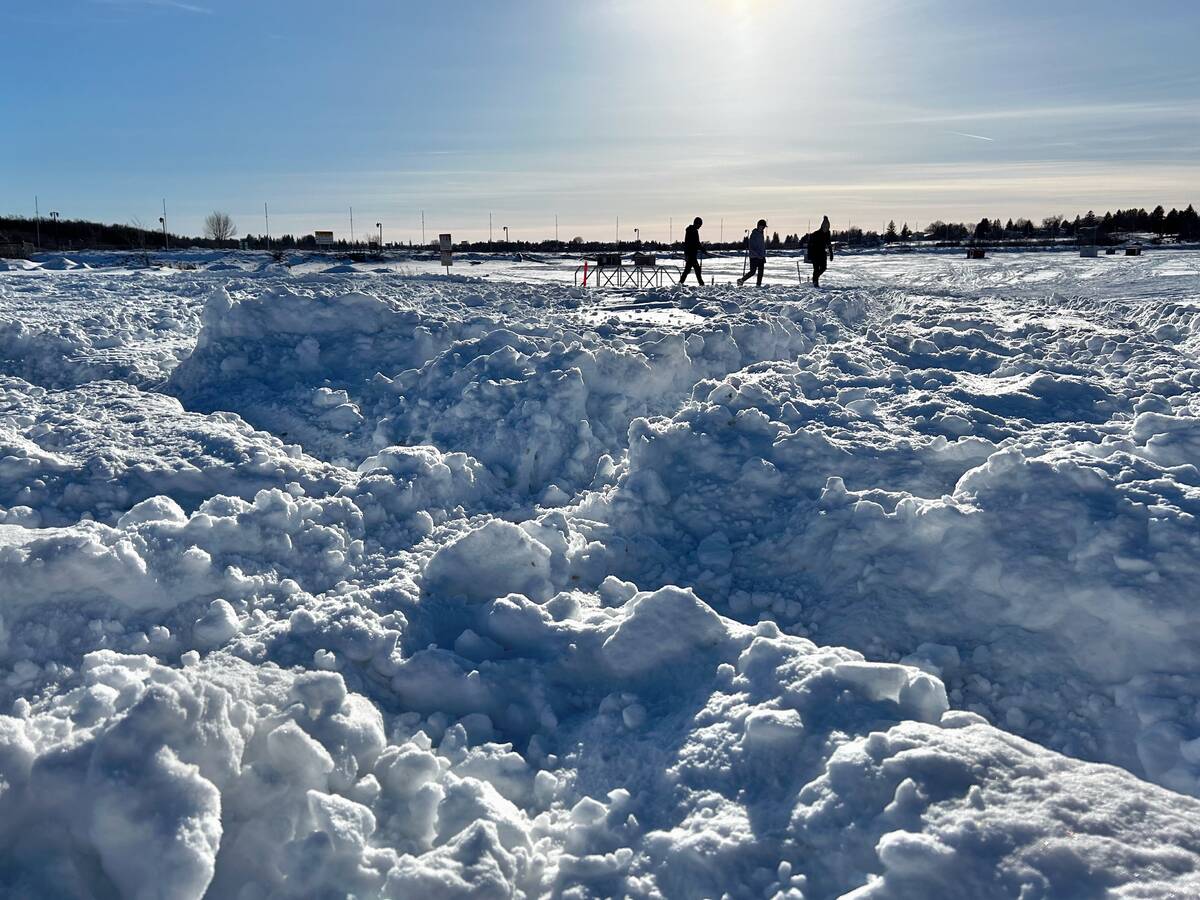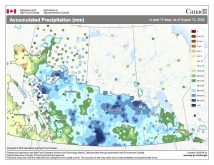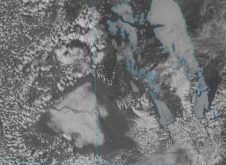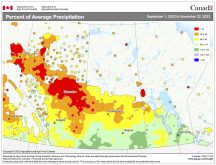Sometimes the weather actually does behave just like the “textbook” says it should — and that’s what we saw late last week and into last weekend. After we discussed “Indian summer” we saw record-cold overnight lows turn into record-warm daytime highs!
The warm temperatures at the end of the month made September 2012 the 16th month in a row with above-average temperatures for most regions. The cold overnight lows during the middle of the month made it close, but the record highs to end the month pushed the mean monthly temperatures to around 0.5 C above average. Precipitation during September was very low, with most places recording fewer than 10 millimetres of rain.
Read Also

Predicting Manitoba winter snowfall
How much snow should farmers in Manitoba expect for the rest of December 2025 and into January-February 2026? Here’s what the weather models say about the winter to come.
Interestingly, basically the same conditions that brought us the record-low overnight temperatures on Sept. 23 also brought us the record-warm temperatures on Sept. 29. Table 1 is an overview of some of the records that were broken across Manitoba this past weekend.
What was truly unique about this record-warm event was the extent that some of the records were broken in some areas. For example, both Thompson and Churchill broke their previous recorded highs for this date by more than 7 C — something that is pretty much unheard of.
What brought both the record-high temperatures last weekend and the record-low temperatures the weekend before? We saw a strong ridge of high pressure start to build into our region on the weekend of Sept. 23-24. This ridge allowed for skies to temporarily clear, and with the area being so dry, the overnight temperatures were able to fall off dramatically. Once fall rolls around, the ability to stay warm overnight depends a lot on just how much moisture in in the air. We see the same thing in the summertime. When it is hot and humid out, our overnight lows tend to be warm. This is due to the fact that as the air cools to the dew point, the water vapour in the air starts to condense. This releases heat, which then helps to keep the air warm. If the dew point is low (or the relative humidity is low) then the air has to cool down further before condensation takes place and heat is released. During the summer, nights are not that long, and even when it is dry, we can only cool down so much before the sun is back up.
So how can the conditions that led to record-low temperatures also lead to record-warm temperatures? Well, the same thing that happens with water vapour during the night also happens during the day, but in reverse. When the sun is shining, its energy can go into two things: it can either heat up the objects on the Earth or it can heat up the moisture in the air. If the energy goes into objects on the Earth, then these objects get warm and in turn warm up the air around them. If the energy goes into warming up the water vapour in the air, then that heat is “stored” in the water vapour and does not go into heating the air.
With that in mind, let’s take a look ahead to see what October might have in store for us, weather-wise. According to Environment Canada, we should see above-average temperatures across western Manitoba, with near-average temperatures over eastern areas. Precipitation will be near average over central and northern regions, with extreme southern regions seeing below average amounts. Over at the Old Farmer’s Almanac, they are calling for both average temperatures and precipitation amounts in October. The always-ambiguous Canadian Farmers’ Almanac seems to call for colder than average temperatures, with mentions of stormy weather and heavy rain. It also calls for cold conditions several times.
Finally, here at the Co-operator, I am calling for a mixed bag of conditions. I expect the current pattern we’ve been experiencing over the last month to continue, which means we will see a week or two of below-average temperatures followed by a week or two of above-average conditions. This will result in near average temperatures over the month.
Precipitation is always the hardest to predict, but until something comes around that will break the large-scale drought, I have a tough time seeing us come anywhere close to average amounts of precipitation this month.















